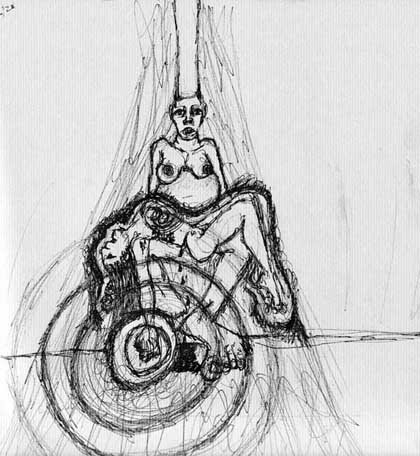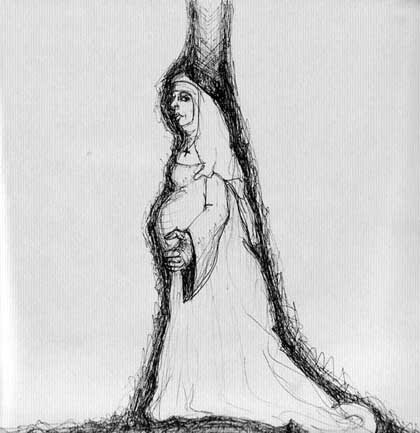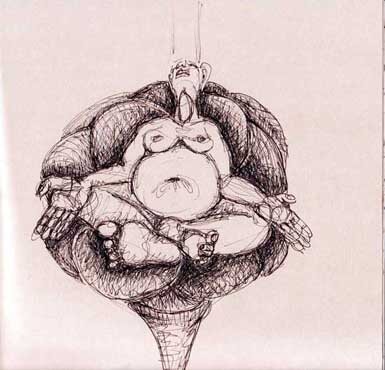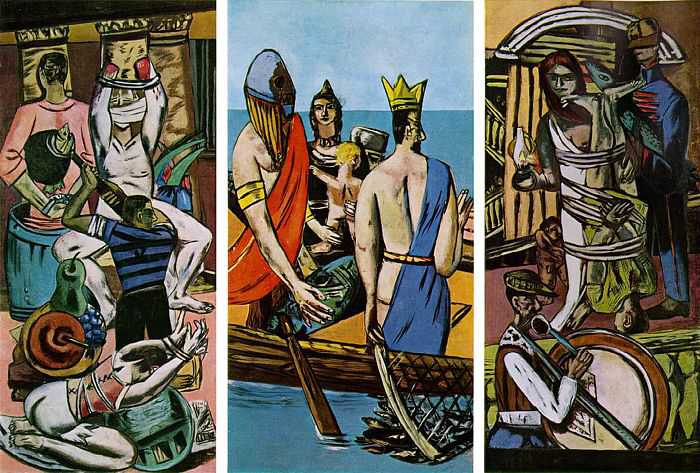Update: Unfortunately this video has disappeared, but I encourage you to google Matthew Fox and Hildegard if you would luike to learn more. The video is not necessary to read this essay>
During the first part of this video, I was close to tears. I’ve written about my deep connection to Hildegard’s life before. In college, I even made a pilgrimage to Bingen to visit Hildgard’s bones and the corner of earth where she lived. Fox starts with pictures of the places of her life, places I visited and then goes on to her illness and her awakening at the age of 41 or 42. I am close to turning 41 and have dealt with dramatic & debilitating illness for many years. There are obvious parallels and it hit me forcibly that Hildegard’s life is an exemplar for my own. Not that I could attain her genius and connection to the Divine, but I could attain her commitment to her creativity process, her respect and love of the physical world and possibly even a reprieve from illness although not necessarily how you may be imagining.I have no expectation of my illness being lifted from me, but I do have hope. And this is, perhaps, why this video effected me so profoundly. I do have evidence that making art heals me. See here and here. But more than that, I have felt art remove the idea of illness from my system. When I work illness disappears. I’m just there. I enter a state where illness simply does not exist. It is state of freedom where I can embrace my physical nature bur not be burdened by it.
Most of my life, the physical world has seemed a burden to me. Once a long time ago, I met an amazing fellow, a pagan jewelry maker and musician of the highest caliber. He said something to me that was so shocking to my system that it shifted everything for me. He said:
I love this earth, I love the pleasure, the pain, the fight, the food, the suffering.
He said it with such relish. It was clear that he really did love being a physical being. It never occurred to me that anyone would want to do anything else but escape Earth and leave physicality behind. From that moment I considered for the first time ever, embracing my life on Earth. My illness which has bestowed so many gifts, helped force my down to Earth as well. By leaving me with little strength, I could not occupy my time with a million little distractions. It was just me and my body learning to dance for the first time.Hildegard revived herself through her arts writing and painting, physical acts which channel Divine energy into the world. Throughout her work, she embraces nature and the Earth.
Oh greening branch.O greening branchO greening branch!You stand in your nobilityLike the rising dawn.Rejoice now and exultAnd deign to free the fools we are.From our long slavery to evilAnd hold out your handTo raise us up.-Hildegard of Bingen
This is just one example of how she sees God in nature and nature as part of God. It was Hildegard’s job to express this. God rushed through her like Niagara Falls, pouring into this Earth. This is what Victor Frankl has to say about our purpose in life. (He is speaking about is time in a Nazi Concentration camp.)
We had to learn and we had to teach the despairing men that it did not really matterwhat we expected from life, but rather what life expected from us. We needed to stopasking about the meaning of life, and think instead of ourselves as those who were beingquestioned by life—daily and hourly. Our answer must consist, not in talk and meditation,but in right action and in right conduct. What matters, therefore, is not the meaning oflife in general but rather the specific meaning of a person’s life at a given moment.Everyone has his own specific mission in life to carry out a concrete assignment, whichdemands fulfillment. -Victor Frankl, Man’s Search for Meaning (Thanks Alive on All Channels)
I have my assignment. Hildegard is my example. Create, create, create.












